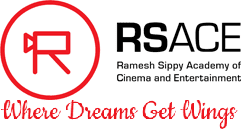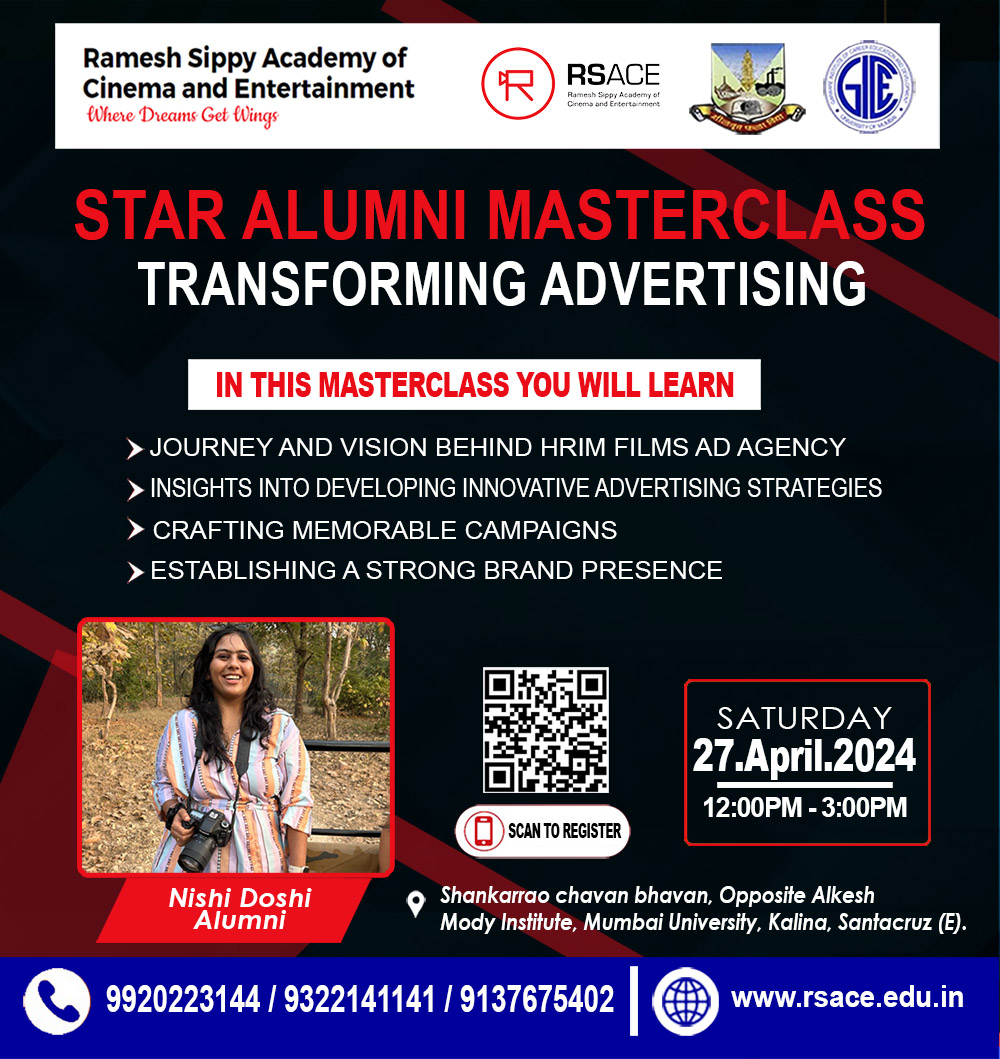Month: April 2024

Introduction
In the bustling entertainment world, standing out from the crowd is challenging. With so many talented individuals looking for opportunities, aspiring filmmakers often find themselves facing tough competition. This is where film school comes in. In this blog, we’ll dive deeply into the reasons why attending film school could be your ticket to standing out in the competitive industry of entertainment.
Why Go to Film School?
Film school offers lots of perks for aspiring filmmakers. Firstly, it provides a comprehensive education and hands-on training in all aspects of filmmaking. From learning the basics of directing to mastering the art of screenwriting, film school equips you with the knowledge and skills needed to bring your creative visions to life. Moreover, film schools expose you to various facets of the industry, including directing, cinematography, editing, and screenwriting, giving you a well-rounded understanding of the craft.
Do You Need Film School?
Some people say you can learn everything on your own, but going to film school has its advantages. It provides structured learning, mentorship from industry professionals, and access to valuable resources. It’s an investment in your future, that could pay off in ways you never imagined. Remember, building a network is essential in any industry, and film school can be the perfect place to start.
Hands-On Learning and Practical Skills:
One great thing about film school is that you get to learn by doing. By using advanced equipment, editing softwares, and professional-grade technology, you gain practical experience that enhances your technical skills and creativity. Familiarity with industry-standard equipment not only makes you more competitive in the job market but also ensures that you can produce high-quality work that stands out in a crowded field.
Can Film School Make You Stand Out?
Absolutely! Film school gives you a competitive edge in an industry where standing out is essential. The comprehensive education and training provided by film schools give you an edge over self-taught individuals. Moreover, collaborative projects and portfolio-building opportunities during film school allow you to showcase your talents and differentiate yourself from the crowd. Additionally, the exposure to industry professionals and networking opportunities that film school provides can open doors to exciting career prospects.
Networking Opportunities
Networking is key in the entertainment industry, and film school offers ample opportunities to connect with industry professionals and fellow students. From industry events to guest speakers and alumni networks, film schools provide a platform for building valuable relationships that can shape your future career. By fostering connections with peers and mentors, you increase your chances of finding job opportunities and advancing in the industry.
Conclusion
In conclusion, the path to success in the entertainment industry often begins with a solid foundation in film education. Film school provides aspiring filmmakers with the essential knowledge, skills, and connections needed to thrive in this competitive field.
Are you passionate about filmmaking? Consider joining esteemed institutions like the Ramesh Sippy Academy of Cinema & Entertainment. Our full-time degrees and certified courses, endorsed by the University of Mumbai, set the stage for a rewarding career in the world of cinema. Take the first step towards realizing your cinematic aspirations and unlock the doors to a rewarding career in film.

In the fast-paced world of animation, storytelling is also a powerful tool that allows animators to bring magic on screen, for audiences of all ages. Animation, a vibrant canvas where imagination meets technology, holds a secret key to the hearts of audiences worldwide. In this digital age, where stories are more than mere narratives, animators wield the power of storytelling, to get deep connections with their viewers. In this blog, we peel back the curtain and explore the intricate relationship between animation and storytelling
Understanding the Basics
● What Is Animation and Storytelling?
Animation is the process of creating moving images through a sequence of frames, while storytelling is the art of conveying narratives through words, visuals, or both. When combined, animation and storytelling form a dynamic duo, that captivates audiences of all ages.
- Relationship Between Animation and Storytelling
Storytelling is the backbone of animation, providing the foundation upon which animators build their creations. Whether it’s a whimsical tale of adventure or a heartfelt drama, effective storytelling is essential for capturing the audience’s attention and imagination.
- Key Components of Effective Storytelling in Animation
Effective storytelling in animation involves crafting compelling characters, engaging plots, and immersive worlds that draw viewers into the narrative. From the protagonist’s journey to the conflicts they face, every element of the story plays a crucial role in shaping the audience’s experience.
Techniques Used by Animators
- Character Development and Relatability
One of the most important techniques used by animators is character development. By creating characters with depth, personality, and relatability, animators can forge a strong emotional connection between the audience and the story.
- Plot Development and Structure
Plot development and structure are also key aspects of effective storytelling in animation. From establishing the central conflict to building tension and resolution, a well-structured plot keeps viewers engaged from start to finish.
- Visual Storytelling and Animation Styles
Visual storytelling is another technique that animators use to convey narratives effectively. Through the use of color, composition, and animation styles, animators can evoke emotions, set the mood, and enhance the storytelling experience.
The Power of Visual Storytelling
Visuals play a crucial role in conveying narratives in animation. From the lush landscapes of Studio Ghibli films to the vibrant characters of Disney classics, visuals have the power to transport audiences to new worlds and evoke a wide range of emotions.
Iconic animated films such as “Toy Story,” “The Lion King,” and “Spirited Away” are shining examples of visual storytelling done right. Through stunning animation, memorable characters, and captivating storytelling, these films have left a lasting impact on audiences around the world.
Conclusion
In conclusion, storytelling is the heart and soul of animation, allowing animators to connect with audiences in profound and meaningful ways. By mastering the techniques of character development, plot structure, and visual storytelling, aspiring animators can create compelling stories that resonate with viewers for generations to come. The key to success in animation lies in connecting with your audience on a deep and emotional level.

Introduction
In the world of movies, dialogue plays a crucial role in driving the narrative forward and shaping the essence of the characters. In this comprehensive guide, we’ll explore the concepts of crafting compelling dialogue for screenplays, from understanding its pivotal role to mastering the techniques that elevate scripts to cinematic brilliance. This blog aims to equip aspiring screenwriters with the knowledge and skills necessary to create captivating dialogue that brings their stories to life.
Effective dialogue isn’t just important for a screenplay – it’s absolutely essential. It’s not enough to simply have characters talking; you need dialogue that crackles with energy and purpose, that drives the story forward and keeps the audience on the edge of their seats. Without it, your screenplay will fall flat and fail to connect with your audience. So don’t settle for mediocre dialogue – make sure every word is powerful, meaningful, and utterly compelling.
Mastering the Craft of Compelling Dialogue
- . Understanding Character Development Through Dialogue
Dialogue is a powerful tool for character development. By paying attention to speech patterns, vocabulary, and tone, writers can breathe life into their characters, making them feel authentic and relatable to audiences.
- Incorporating Subtext and Emotion
Great dialogue often operates on multiple levels, conveying both surface meaning and underlying subtext. By infusing dialogue with emotion and nuance, writers can deepen the complexity of their characters and relationships.
- Ensuring Dialogue Advances the Plot
Every line of dialogue should serve a purpose, whether it’s revealing crucial information, driving conflict, or foreshadowing future events. Tight, focused dialogue propels the narrative forward, keeping viewers invested in the story’s outcome.
- Balancing Dialogue with Action and Description
While dialogue is essential, it must be balanced with action and description to maintain pacing and visual interest. Well-crafted scenes integrate dialogue seamlessly with physical action and visual imagery, creating a dynamic and immersive viewing experience.
Examples of Dialogue in Bollywood Movies
- Iconic Movie Scenes Driven by Dialogue
Bollywood cinema is renowned for its memorable dialogue and dramatic performances. Movies like “Rang de Basanti” and “Sholay” demonstrate how well-written dialogue can stir emotions, spark contemplation, and connect with audiences of all ages.
- Impact of Memorable Dialogue on Audience Engagement
Memorable dialogue has the power to transcend language and cultural barriers, forging emotional connections with audiences around the world. It sparks conversations, inspires creativity, and leaves a lasting impression on the collective consciousness of viewers.
Conclusion
Writing effective dialogue is a skill that requires practice, patience, and a deep understanding of storytelling fundamentals. By mastering the art of dialogue writing, aspiring screenwriters can elevate their scripts to new heights and leave a lasting impact on audiences.
In closing, Aspiring screenwriters should embrace the challenge of dialogue writing with enthusiasm and dedication. Through relentless practice, thoughtful study, and a willingness to push creative boundaries, you can unlock the full potential of your storytelling prowess and embark on a journey toward cinematic greatness. So, pick up your pen, sharpen your wit, and let your dialogue shine on the silver screen!






